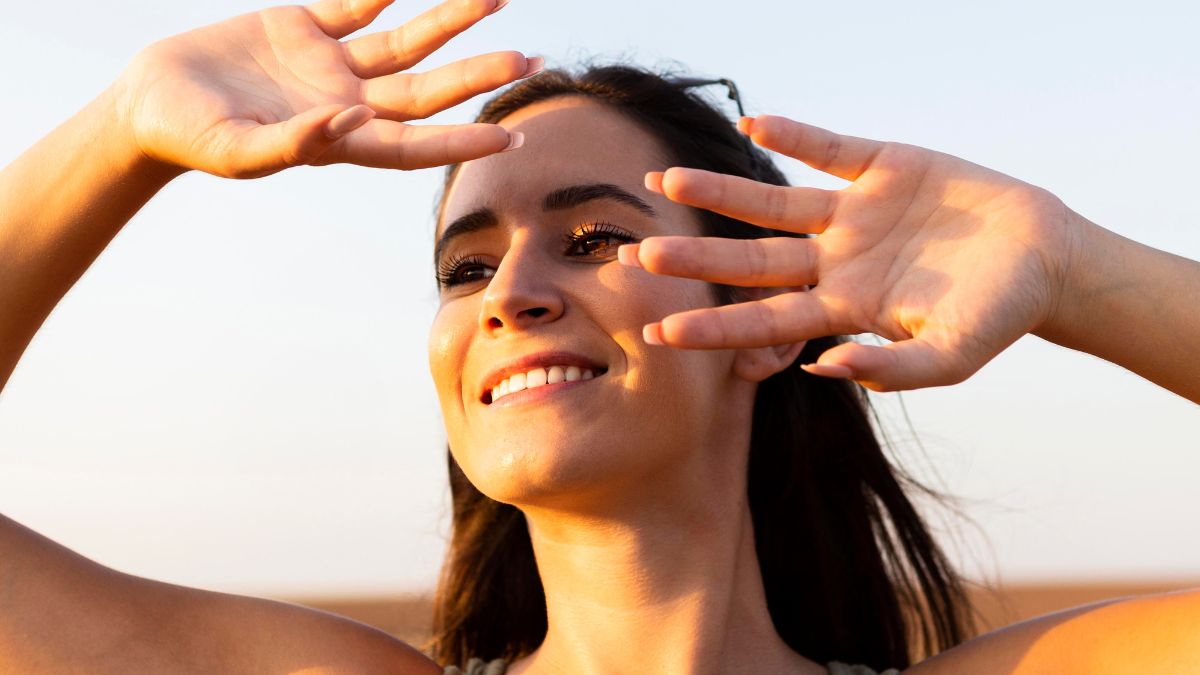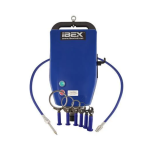
-
Table of Contents
“Sun Safety Awareness: Shielding Your Skin from UV Rays”
Sun Safety Awareness: Protecting Your Skin from Harmful UV Rays
Sun safety awareness is crucial in safeguarding our skin from the harmful effects of ultraviolet (UV) rays. UV rays, emitted by the sun, can cause various skin problems, including sunburn, premature aging, and an increased risk of skin cancer. By understanding the importance of sun protection and adopting preventive measures, we can minimize the damage caused by UV rays and maintain healthy skin. This article will provide essential information on sun safety awareness and offer practical tips to protect your skin from harmful UV rays.
The Importance of Sunscreen: Understanding SPF and How to Choose the Right Sunscreen for Your Skin
Sun Safety Awareness: Protecting Your Skin from Harmful UV Rays
The sun is a powerful force that provides us with warmth and light, but it also emits harmful ultraviolet (UV) rays that can damage our skin. Sunscreen is a crucial tool in protecting our skin from these harmful rays, and understanding SPF and how to choose the right sunscreen for your skin is essential for maintaining sun safety.
SPF, or Sun Protection Factor, is a measure of how well a sunscreen protects against UVB rays, which are the main cause of sunburn. The higher the SPF number, the greater the level of protection. For example, a sunscreen with an SPF of 30 will block about 97% of UVB rays, while an SPF of 50 will block about 98%. It’s important to note that no sunscreen can provide 100% protection, so it’s still necessary to take other sun safety measures, such as seeking shade and wearing protective clothing.
When choosing a sunscreen, it’s important to consider your skin type and specific needs. If you have sensitive skin, look for a sunscreen that is labeled “hypoallergenic” or “fragrance-free” to minimize the risk of irritation. For those with oily or acne-prone skin, opt for a sunscreen that is oil-free and non-comedogenic to avoid clogging pores. If you have dry skin, choose a sunscreen that contains moisturizing ingredients to keep your skin hydrated.
In addition to SPF, it’s also important to consider broad-spectrum protection when choosing a sunscreen. Broad-spectrum sunscreens protect against both UVA and UVB rays. UVA rays are responsible for premature aging and can penetrate through glass, while UVB rays are the primary cause of sunburn. By choosing a broad-spectrum sunscreen, you can ensure that you are protected against both types of harmful rays.
Another factor to consider when choosing a sunscreen is its application method. Sunscreens come in various forms, including lotions, creams, sprays, and sticks. Lotions and creams are the most common and are suitable for all skin types. They are easy to apply and provide good coverage. Sprays are convenient for hard-to-reach areas, but it’s important to ensure that you apply enough to provide adequate protection. Sticks are great for on-the-go touch-ups and are particularly useful for protecting sensitive areas like the lips and around the eyes.
When applying sunscreen, it’s important to use enough to provide adequate coverage. The general rule of thumb is to use about one ounce, or a shot glass full, to cover your entire body. Be sure to apply sunscreen generously and evenly to all exposed areas, including the face, neck, ears, and hands. Don’t forget about commonly overlooked areas like the back of the neck and tops of the feet.
It’s also important to reapply sunscreen regularly, especially if you are swimming or sweating. Water-resistant sunscreens can provide protection for up to 40 or 80 minutes, depending on the label. However, it’s still important to reapply every two hours, even if you are not in the water or sweating excessively.
In conclusion, sunscreen is a vital tool in protecting our skin from harmful UV rays. Understanding SPF and choosing the right sunscreen for your skin type and needs is crucial for maintaining sun safety. Remember to apply enough sunscreen, choose a broad-spectrum formula, and reapply regularly to ensure maximum protection. By taking these steps, you can enjoy the sun safely and keep your skin healthy and protected.
Sun Protective Clothing: How to Dress to Protect Your Skin from the Sun’s Harmful Rays
Sun Protective Clothing: How to Dress to Protect Your Skin from the Sun’s Harmful Rays
When it comes to sun safety awareness, most people think of sunscreen as the first line of defense against harmful UV rays. While sunscreen is indeed crucial, another effective way to protect your skin from the sun’s harmful rays is by wearing sun protective clothing. Sun protective clothing is specially designed to block out the sun’s UV rays and provide an extra layer of protection for your skin.
So, what exactly is sun protective clothing? Sun protective clothing is made from fabrics that have a high ultraviolet protection factor (UPF). UPF is a rating system used to measure the effectiveness of a fabric in blocking out UV radiation. The higher the UPF rating, the better the fabric is at protecting your skin from the sun’s harmful rays. Look for clothing with a UPF rating of 50+ for maximum protection.
When choosing sun protective clothing, it’s important to consider the fabric type and construction. Fabrics such as nylon, polyester, and lycra are excellent choices as they have a tight weave that blocks out more UV radiation. Additionally, some fabrics are treated with UV-absorbing chemicals to enhance their sun protection capabilities. These treated fabrics are often labeled as “UV-protective” or “sun-protective.”
In terms of construction, look for clothing with long sleeves and pants that cover your arms and legs. The more skin you can cover, the better protected you’ll be. Additionally, opt for clothing with a high neckline and a wide-brimmed hat to protect your face, neck, and ears. Don’t forget to wear sunglasses with UV protection to shield your eyes from the sun’s harmful rays.
Sun protective clothing doesn’t have to be heavy or uncomfortable. Many brands now offer lightweight and breathable options that are perfect for hot summer days. These fabrics are designed to wick away moisture and keep you cool while still providing excellent sun protection. Look for clothing with moisture-wicking properties and ventilation features such as mesh panels or underarm vents.
It’s important to note that sun protective clothing is not a substitute for sunscreen. While clothing can provide excellent protection for covered areas, exposed skin still needs sunscreen to shield it from the sun’s rays. Apply a broad-spectrum sunscreen with an SPF of 30 or higher to any exposed skin, and don’t forget to reapply every two hours or after swimming or sweating.
When it comes to sun safety, it’s all about layering your protection. Start with sun protective clothing as your first line of defense, and then apply sunscreen to any exposed areas. By combining these two methods, you’ll ensure that your skin is well-protected from the sun’s harmful rays.
In conclusion, sun protective clothing is an essential part of sun safety awareness. By choosing clothing with a high UPF rating, covering as much skin as possible, and opting for lightweight and breathable fabrics, you can effectively protect your skin from the sun’s harmful UV rays. Remember to always wear sunscreen on exposed skin and reapply regularly. With the right clothing and sunscreen combination, you can enjoy the outdoors while keeping your skin safe and healthy.
Sun Safety for Kids: Tips and Tricks to Keep Children Safe from Sunburns and Skin Damage
Sun Safety Awareness: Protecting Your Skin from Harmful UV Rays
Sun Safety for Kids: Tips and Tricks to Keep Children Safe from Sunburns and Skin Damage
As the summer season approaches, it is crucial to prioritize sun safety, especially when it comes to protecting our children’s delicate skin from harmful UV rays. Sunburns not only cause immediate discomfort but can also lead to long-term skin damage and increase the risk of skin cancer later in life. By following a few simple tips and tricks, parents can ensure their children enjoy the outdoors while staying safe from the sun’s harmful effects.
First and foremost, it is essential to understand the dangers of UV rays and how they affect our skin. UV rays are invisible rays of light emitted by the sun that can cause damage to our skin cells. There are two types of UV rays that reach the Earth’s surface: UVA and UVB. UVA rays penetrate deep into the skin, causing premature aging and wrinkles, while UVB rays are responsible for sunburns. Both types of rays can contribute to the development of skin cancer.
To protect children from harmful UV rays, it is crucial to apply sunscreen regularly. Look for a broad-spectrum sunscreen with a sun protection factor (SPF) of 30 or higher. Apply it generously to all exposed areas of the skin, including the face, ears, neck, and hands. Remember to reapply every two hours, or more frequently if your child is swimming or sweating. Additionally, encourage your child to wear protective clothing, such as long-sleeved shirts, pants, and wide-brimmed hats, to shield their skin from direct sunlight.
Seeking shade during the peak hours of the day is another effective way to protect children from the sun’s harmful rays. The sun’s rays are strongest between 10 am and 4 pm, so it is advisable to plan outdoor activities before or after these hours. If shade is not readily available, consider using an umbrella or a pop-up tent to create a shaded area for your child to play in. This will provide an extra layer of protection against the sun’s harmful rays.
It is also important to remember that sun safety extends beyond the summer months. Even on cloudy or overcast days, UV rays can still penetrate the clouds and cause damage to the skin. Therefore, it is essential to practice sun safety year-round. Encourage your child to develop healthy habits by incorporating sunscreen application into their daily routine, regardless of the weather.
In addition to sunscreen and shade, it is crucial to protect your child’s eyes from the sun’s harmful rays. UV rays can cause damage to the eyes, leading to conditions such as cataracts and macular degeneration later in life. Ensure your child wears sunglasses with 100% UV protection whenever they are outdoors. Look for sunglasses that fit properly and have a wraparound design to provide maximum coverage.
Lastly, lead by example and educate your child about the importance of sun safety. Teach them about the dangers of UV rays and why it is essential to protect their skin from the sun. Encourage them to take an active role in their sun safety routine by applying sunscreen themselves and reminding you to seek shade when necessary. By instilling these habits early on, you are setting the foundation for a lifetime of sun safety awareness.
In conclusion, protecting our children from harmful UV rays is a top priority when it comes to sun safety. By following these tips and tricks, parents can ensure their children enjoy the outdoors while minimizing the risk of sunburns and long-term skin damage. Remember to apply sunscreen regularly, seek shade during peak hours, and protect your child’s eyes with sunglasses. By practicing sun safety year-round and educating our children about its importance, we can create a generation that prioritizes their skin’s health and well-being.In conclusion, Sun Safety Awareness is crucial in protecting our skin from harmful UV rays. By following preventive measures such as wearing sunscreen, protective clothing, and seeking shade during peak sun hours, we can reduce the risk of skin damage and potential skin cancer. Regular skin checks and early detection are also important for maintaining skin health. By prioritizing sun safety, we can enjoy the outdoors while minimizing the harmful effects of UV radiation.


